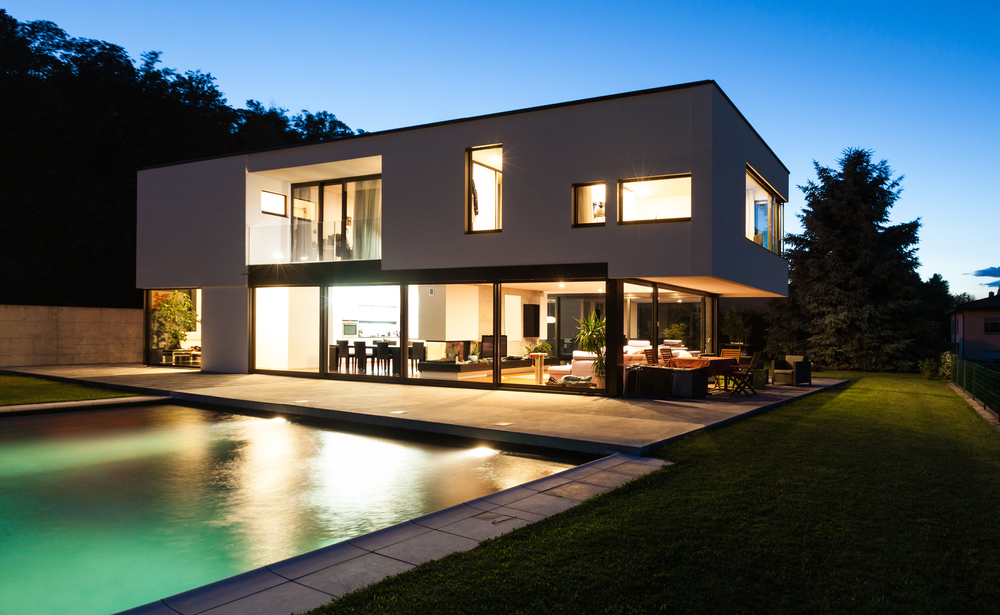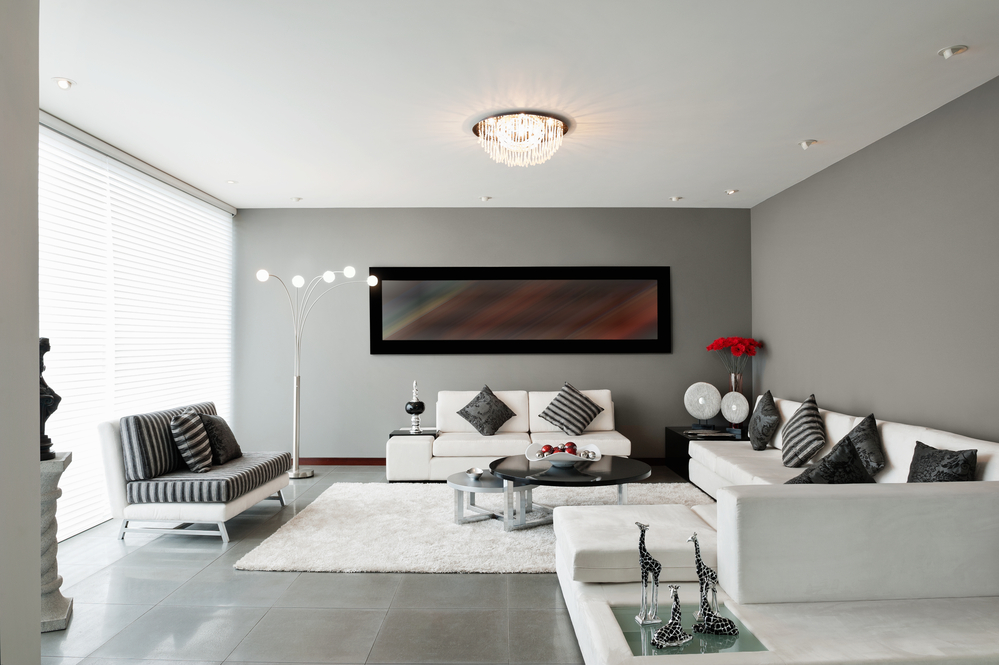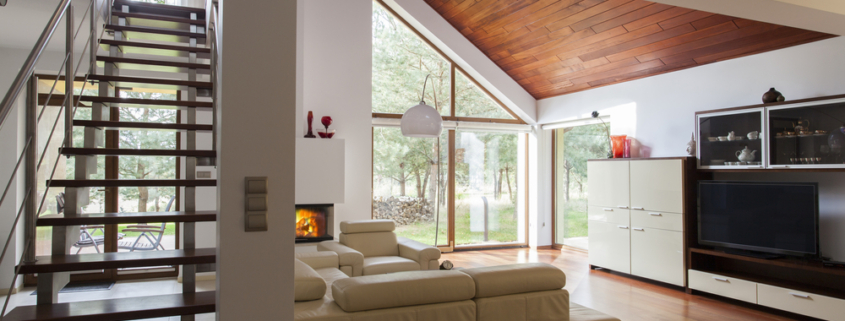Contemporary Style House
For a lot of people, finding an exact definition that fits the term “contemporary” can be challenging. Whether it’s contemporary music, arts, or culture, the term is always changing and adapting to fit modern standards.
When it comes to a contemporary style house, there’s still room for flexibility in the definition, but there are also quite a few key elements that help define the style as well. Here’s what any homeowner with a contemporary home or those looking to purchase one should know about the architectural style:
Click here to learn about other House Styles.
History of Contemporary Style
While many architectural styles became popular during the 19th and early-twentieth-century, the contemporary-style house is not one of them. Since it became popular during the early 1960s and ‘70s, contemporary designs tried to find ways to build homes that were more sustainable, appealing to the eye, and beacons of the future.
Not many homes can remain trendy and still increase the price tag, but the careful design of many contemporary homes have achieved this feat. A few famous examples of contemporary architecture include The Tubac House, which was designed by Rick Joy in 2001. Part of the aim of this design was to accentuate and celebrate the desert scenery that surrounded the home.
Another classic example is the Factor 10 (F10) House. Not only did this house win an award from the City of Chicago for its eco-friendly design, but it features unique elements such as a roof that’s made with sedum plants and an entire wall of plastic bottles.
Both contemporary design examples tend to fall on the extreme side, and while not every homeowner may want a wall of plastic bottles or a roof designed with plants, these elements highlight the goal of the contemporary style. Rather than try and make something that is appealing, contemporary design tries to go beyond appearance and make the home useful and functional to everyday life.

Downsides and Upsides of Contemporary Homes
Like any house style, owning a contemporary style house has its advantages and disadvantages. Understanding what they are ahead of time can save many homeowners a lot of hassle.
When it comes to downsides, there aren’t too many headaches that come with a contemporary home. Since the design is meant to be practical, these homes can focus more on functionality rather than aesthetics to make everyday life a little easier. However, one potential downside is energy consumption.
As modern as technologically-advanced as a contemporary home might be, they can also suck a lot of energy and take up a lot of space on the power grid. It’s not unusual for a contemporary home, especially one that is larger in size to have oversized or extra appliances for storage. While an extra refrigerator might seem handy, the energy-consumption might not be worth it.
Large windows don’t always help either. While lots of glass and natural light are staples of contemporary design, a poorly-designed window can do more harm than good. Homeowners might want to consider investing in UV-blocking glass, especially if their home has oversized windows.
As far as benefits go, contemporary homes can be great for entertaining. Since many of these houses already come with a hefty price tag, they feature lavish outdoor amenities, extravagant dining rooms, and an open floor plan. For anyone that’s looking to relax or show their home off at a dinner party, a contemporary home probably won’t disappoint.
Another key benefit that relates to the goal of contemporary design is sustainability. As modern as they are, homeowners don’t usually need to worry about making their home more sustainable or trying to update it to fit modern times. It’s not uncommon for a contemporary home to be built with eco-friendly or recycled materials.
Modern Architecture vs. Contemporary Style
When discussing the contemporary style and home design, it’s often easy for people to mix up “modern” with “contemporary.” This is especially true since contemporary architecture continues to evolve to meet present-day standards and trends, and may feel much more modern.
Modern architecture is a product of the early and mid-twentieth century, and it symbolized an era of change for construction and interior design within the United States. The modern style used clean lines and worked to factor in superior function and modern engineering. However, after a few decades, architects began to feel as if some modern homes were “cold” or “unfriendly.” Without adding in elements of other styles, these houses seemed to lack warmth.
When postmodernism design came into play, contemporary design began to take shape. While contemporary style and design continue to borrow from modern architecture, such as trying to connect the indoors to the outdoors, it doesn’t have all the same elements. While modern architecture could lack character at times, contemporary design isn’t as rigid.
For this reason, some architects or designers would argue that contemporary styles have been able to retain popularity while modern homes haven’t been as much of a hit.
Another difference that’s already been touched on is that contemporary design continues to adapt. Modern styles will always keep the same elements and features, but what many people consider to be contemporary could change within a few decades.

Key Elements of the Contemporary Style and Home Design
Even if the definition and trends that follow the contemporary style seem to shift over time, there are a few key elements that anybody looking to purchase a home can usually identify. On the outside of the home, contemporary houses typically include:
- A dramatic facade: Unlike a Craftsman or Bungalow home, there’s nothing “cookie-cutter” about a contemporary house. Contemporary homes tend to look completely different from each other, but most of them usually have some sort of dramatic facade that draws attention.
- Large glass windows: One staple of contemporary design seems to be large glass windows. Some architects might even forego windows and include glass walls instead. Many contemporary houses try to take advantage of natural light, and using large windows is one way to do so.
- Geometrical shapes: Using geometric shapes has always been a popular choice for contemporary architects, and not unusual to see a geometric design with many of the outdoor features on a contemporary style house.
- Natural materials: To accentuate the home’s connection to nature, many of these houses use natural materials like stone, wood, or brick for constructing the exterior of the house. It’s also not uncommon for architects to combine these materials together in a creative way.
- Intelligent landscaping: Since nature plays such a large role, the land surrounding the home is almost as important as the home’s design itself. Architects and landscapers take care to carefully craft the landscape around the home.
Once someone walks into a contemporary house, there are still plenty of features that stand out and define the style:
- Wide, open spaces: Contemporary homes try to take advantage of breezy and airy spaces. Rather than making families or owners feel cramped together, many designers try to arrange the furnishings in a way that makes much room feel larger than it is.
- Vaulted ceilings: Speaking of wide-open spaces, many contemporary houses have vaulted or high ceilings. This is another way for architects to create space.
- Industrial furnishings: Like some modern homes, the contemporary style tries to incorporate industrial furnishings without making the home feel too “unfriendly.” Many of these homes have modern kitchens with stainless steel appliances, metal countertops, and other light fixtures in a neutral and gray color palette.
- Neutral color palette: Most contemporary homes don’t use bright or rich color schemes. Instead, this style focuses on making neutral or black-and-white features pop.
While some styles, like the Farmhouse, might be meant entirely for practicality, this isn’t the case for contemporary design. By blending function with aesthetics, many architects strive to create a space that feels spacious but still inviting.



